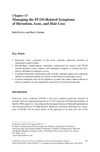An Approach to the Patient With Hirsutism
January 2013
in “
Obstetrical & gynecological survey
”
hirsutism idiopathic hirsutism androgen hyperandrogenism polycystic ovary syndrome PCOS obesity-related disorders nonclassic congenital adrenal hyperplasia CAH androgen-secreting tumors ovarian suppression antiandrogens spironolactone glucocorticoids virilizing CAH androgen suppression therapy shaving plucking waxing eflornithine androgen suppression Vaniqa
TLDR Most women with hirsutism have normal hormone levels and can be treated with cosmetic methods; obesity and PCOS are common causes, and treatments depend on the underlying issue.
This review outlined the diagnosis and management of hirsutism, noting that most women presenting with this condition are endocrinologically normal and can be treated cosmetically. Idiopathic hirsutism, characterized by normal androgen levels and no menstrual irregularities, is often managed with cosmetic measures like shaving, plucking, waxing, and eflornithine. Hyperandrogenism, primarily due to polycystic ovary syndrome (PCOS) and obesity-related disorders, is a common cause requiring endocrinologic evaluation. Less frequent causes include nonclassic congenital adrenal hyperplasia (CAH) and androgen-secreting tumors. Treatment strategies vary based on the underlying cause and include weight loss for obesity-related hirsutism, ovarian suppression, antiandrogens like spironolactone, and glucocorticoids for virilizing CAH. A trial of at least 6 months is recommended for androgen suppression therapy.



